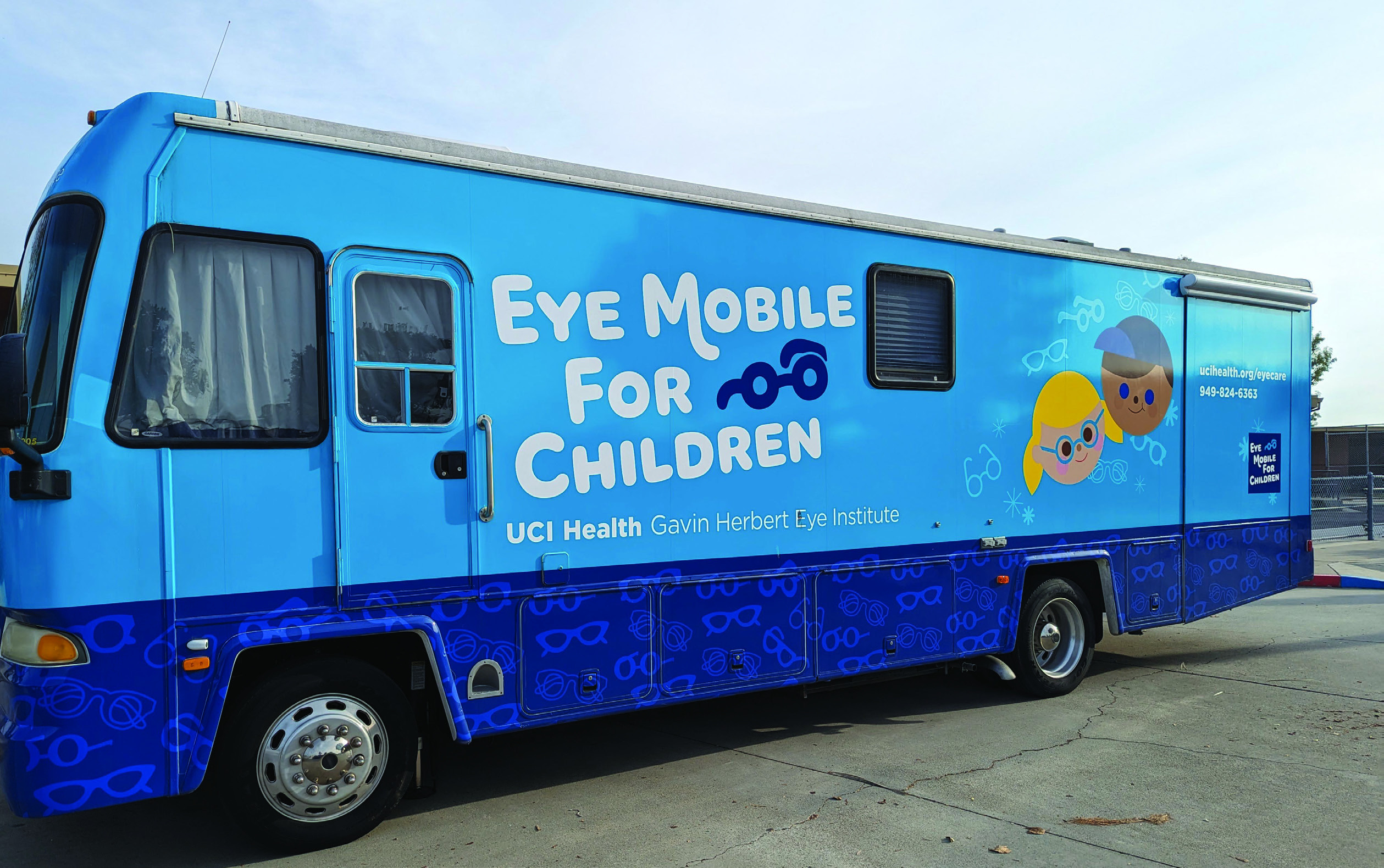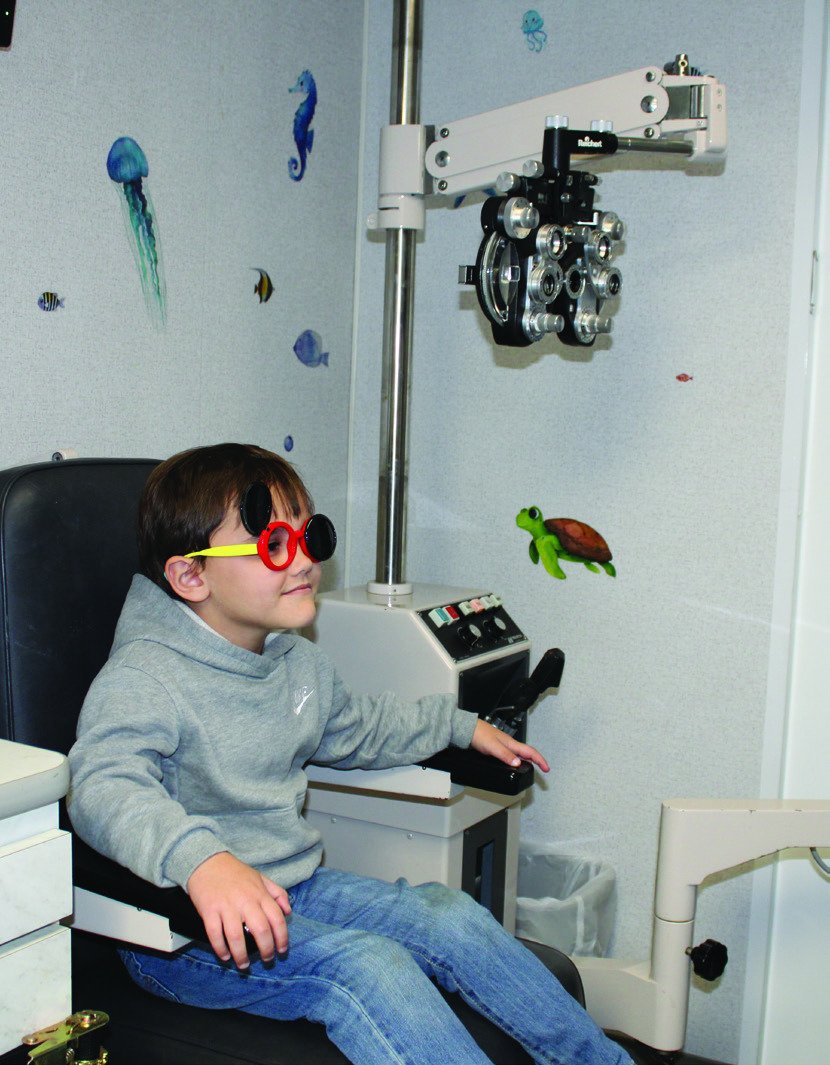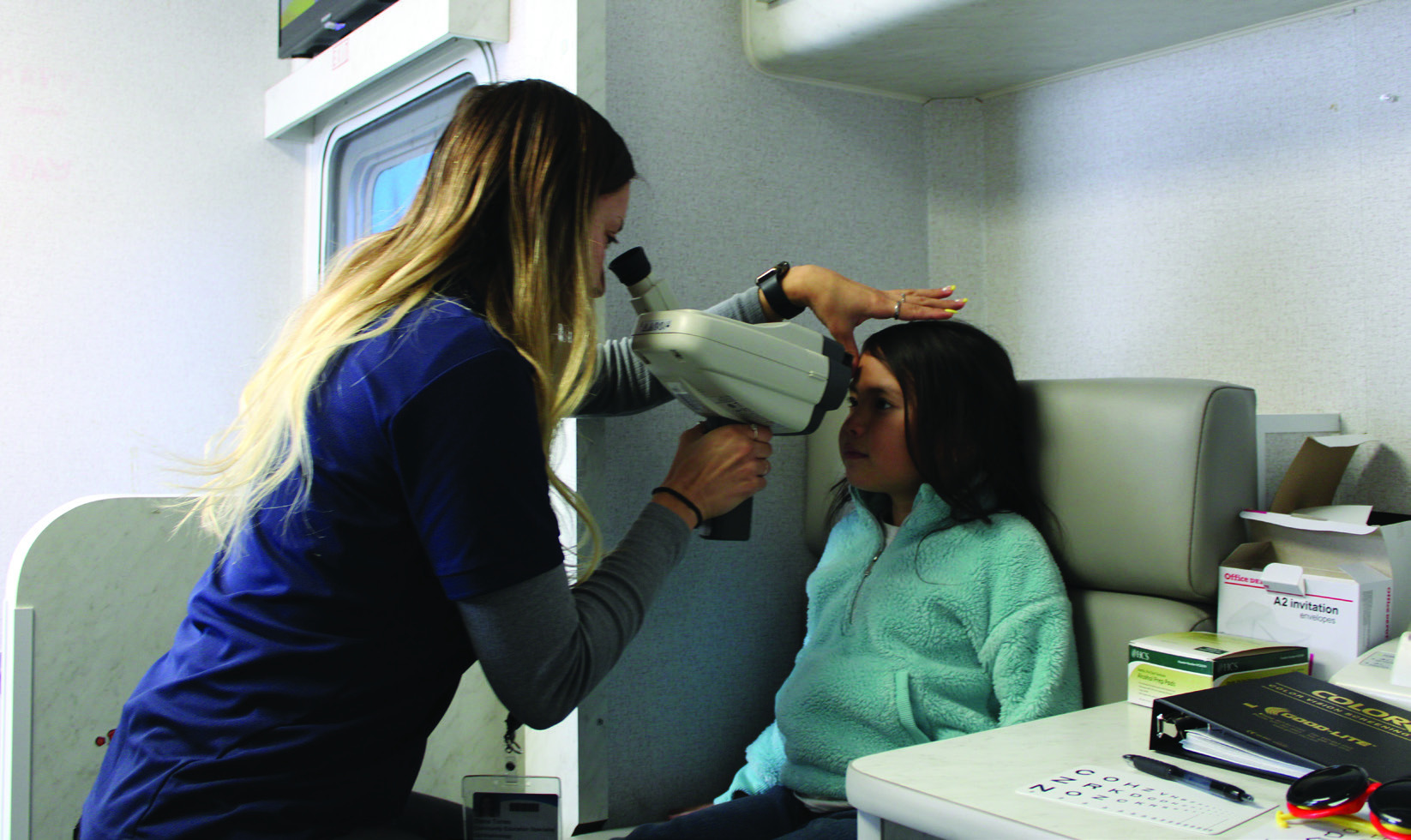


If you wore glasses as a child, you might remember the first time you tried them on and, amazingly, could see individual leaves on trees.
You also might remember getting teased on the playground for your new look. However, that rite of passage is a thing of the past. Thanks to more readily available comprehensive eye exams, today more kids wear glasses than ever before.
That’s the mission of the UCI Health’s Eye Mobile for Children – to put more glasses on the noses of more kids.
A converted motorhome, the huge van acts as a pediatric eye clinic on wheels — coming to patients, rather than vice versa.
Launched at UC San Diego in 2002, the program expanded in 2015 to the UCI Gavin Herbert Eye Institute. Since then, it has served more than 34,000 preschool and elementary children — including in Fountain Valley and Huntington Beach — throughout 12 Orange County school districts.
“Standard eye charts in pediatrician offices do not always detect astigmatism and amblyopia,” said director Iliana Molina, who has worked with the nonprofit since 2003.
Eye Mobile specialists start by conducting in-class tests, one student at a time, using a handheld autorefractor. The computerized machine measures light entering the eye to detect potential problems.
“It’s quick and doesn’t hurt,” said Molina, who has a doctorate in health care administration.
Amblyopia, commonly called “lazy eye,” is a condition in which one eye cannot be corrected to 20-20 vision. “If you don’t catch it before the age of nine, the vision in that eye may never be correctable,” Molina said. “The earlier the better.”
Unlike a wall chart, the autorefractor also can catch hyperopia--up-close vision issues.
If the machine uncovers a potential problem, Eye Mobile refers the child to an optometrist for a comprehensive exam. The doctor arrives on campus in the impressive 33-foot Eye Mobile van.
Then, should the child need prescription eyeglasses, the Eye Mobile program will provide a free pair — with shatterproof lenses and fashionable frames.
“This is all done at no cost to the school districts,” Molina said.
Kids often don’t have any idea that their vision is lacking. “They’ve seen the world this way their entire lives — they don’t know any different,” Molina pointed out. “It’s not like getting a cavity. Cavities hurt, so you know you must go to the dentist.”
Molina remembers when a child with brand-new glasses reached out and touched her freckled face in fascination. “Close-up objects had always been blurry for him,” she said. “He had never been able to see freckles before.”
Due to programs like Eye Mobile, one of the first of its kind, many more young children wear glasses today than just a decade ago, Molina said: “It’s become completely normal.”
As a nonprofit, Eye Mobile relies on grants and donations.
For more information about the program, visit ophthalmology.uci. edu/community/eye-mobile.
